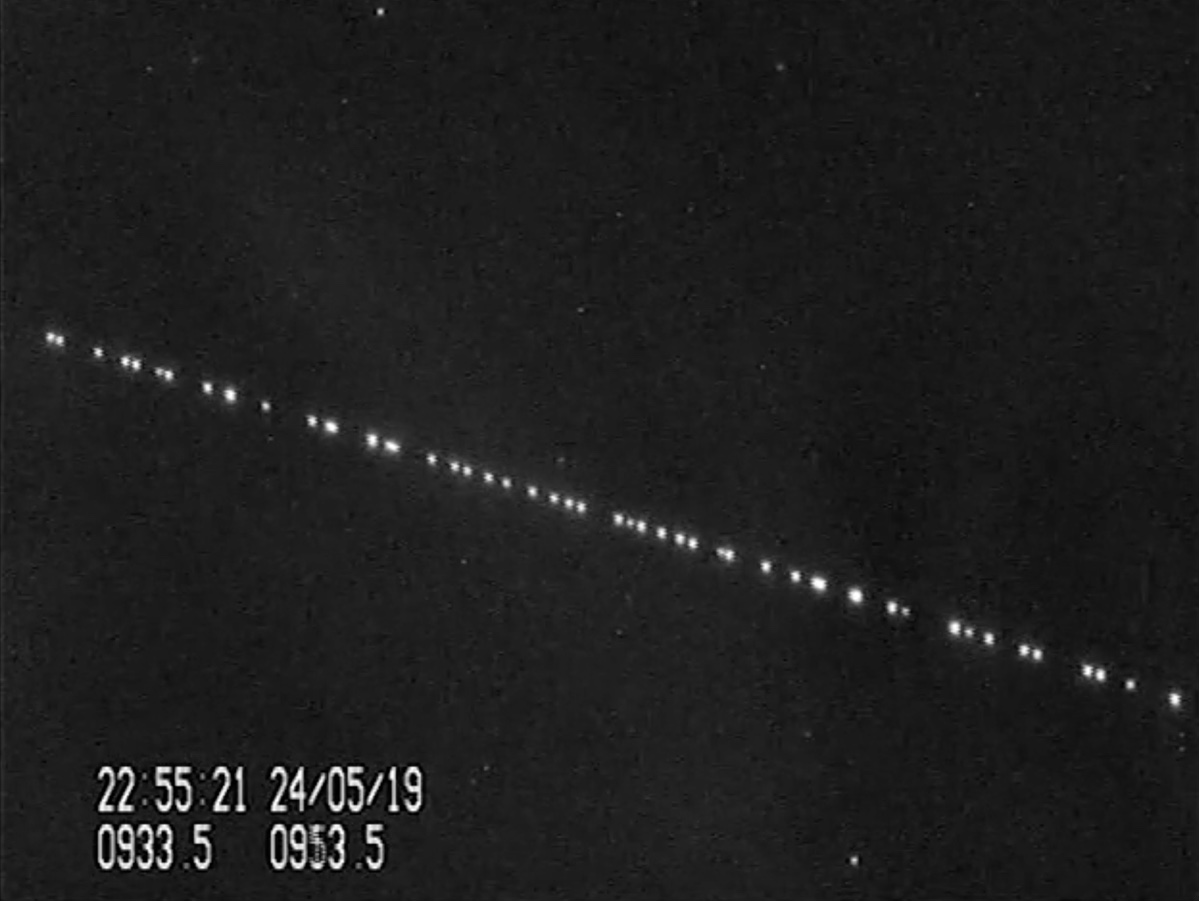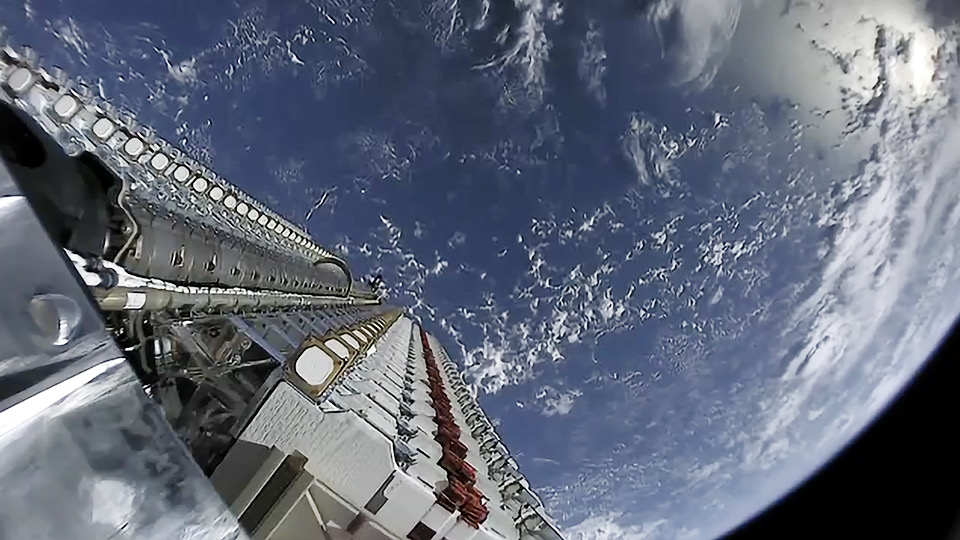SpaceX to Make Starlink Satellites Dimmer to Lessen Impact on Astronomy: Report
New Starlink satellites will have a special coating.
SpaceX has a fix in play to make its bright Starlink satellites less disruptive to astronomy, according to a SpaceNews report.
After the first Starlink internet satellites launched in May, astronomers noticed that the little satellites are quite reflective and bright. With SpaceX reporting it wants to put 42,000 of these satellites in the sky, astronomers were concerned about it washing out parts of the night sky.
So now the company plans to treat one of the Starlink satellites with a special coating, when the next group goes in late December, according to SpaceX president and chief operating officer Gwynne Shotwell.
Video: See SpaceX's 1st Starlink Satellites in the Night Sky
Related: SpaceX's 1st Starlink Megaconstellation Launch in Photos!

Shotwell, in a conversation with SpaceNews and other reporters at SpaceX's headquarters in Hawthorne, California, said that the company had not anticipated problems with reflective satellites.
"No one thought of this," Shotwell said, according to SpaceNews. "We didn't think of it. The astronomy community didn’t think of it." But once reports came to SpaceX of the bright satellites, she added, the company began looking into fixes for the satellites."

We want to make sure we do the right thing to make sure little kids can look through their telescope," she said in the SpaceNews report. "Astronomy is one of the few things that gets little kids excited about space."
Get the Space.com Newsletter
Breaking space news, the latest updates on rocket launches, skywatching events and more!
SpaceX currently has 120 satellites in its constellation (a second batch of 60 satellites launched in November), and plans to launch more in batches of 60 every two or three weeks in 2020. The constellation should be globally operational around the middle of next year, Shotwell said.
- SpaceX's Starlink Constellation Could Swell by 30,000 More Satellites
- SpaceX's Starlink Broadband Service Will Begin in 2020: Report
- 'Whoa, It Worked': Elon Musk Tweets Via SpaceX's Starlink Satellites
Follow Elizabeth Howell on Twitter @howellspace. Follow us on Twitter @Spacedotcom and on Facebook.

Join our Space Forums to keep talking space on the latest missions, night sky and more! And if you have a news tip, correction or comment, let us know at: community@space.com.

Elizabeth Howell (she/her), Ph.D., was a staff writer in the spaceflight channel between 2022 and 2024 specializing in Canadian space news. She was contributing writer for Space.com for 10 years from 2012 to 2024. Elizabeth's reporting includes multiple exclusives with the White House, leading world coverage about a lost-and-found space tomato on the International Space Station, witnessing five human spaceflight launches on two continents, flying parabolic, working inside a spacesuit, and participating in a simulated Mars mission. Her latest book, "Why Am I Taller?" (ECW Press, 2022) is co-written with astronaut Dave Williams.
-
Phantom-e It seems to me that 42000 satellites, even if they're non-reflective, still may cause a problem with blocking the view.Reply -
RussInMiraMesa Actually, given that these satellites are in low earth orbit (under 250 miles), the uproar seems slightly overblown, since they are really only visible for an hour or two after sunset and before sunrise, while they are illuminated by the sun.Reply
I agree that these satellites encroach on observations by reducing the astronomical observation window -- but they don't close that window. -
rod Low earth orbit I think is only for StarLink satellites test phase, then higher orbits follow. Professional observatories already recorded images of multiple starlink *stuff* moving by during the observation runs. Various amateur astronomers observing are reporting problems like this too. It is not uncommon for me when stargazing, to see a 4th or 5th magnitude fainter satellite move by the field of view too using my telescopes, apparently more frequently now that starlink is underway. Even if Starlink satellites are 7th magnitude, binocular viewers will be able to see this stuff too :)Reply -
Videovic Reply
I want to suggest that Spacex uses Phanta black, the super absorbant black coating which is the blackest coating in existence.Admin said:SpaceX has a fix in play to make its bright Star satellites less disruptive to astronomy.
SpaceX to Make Star Satellites Dimmer to Lessen Impact on Astronomy: Report : Read more -
rod In my view, time will tell after the many thousands of new satellites are in Earth orbit. The professional observatory reports and amateur astronomer, stargazer reports - so far do not look good for dark skies in the future. It could turn into a 1970s disco dance lighting in the sky :)Reply









